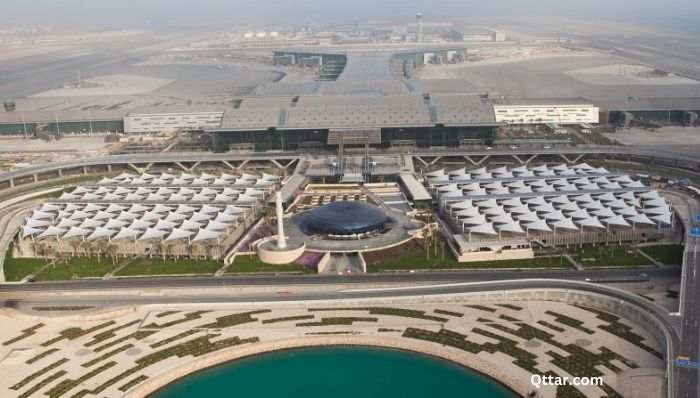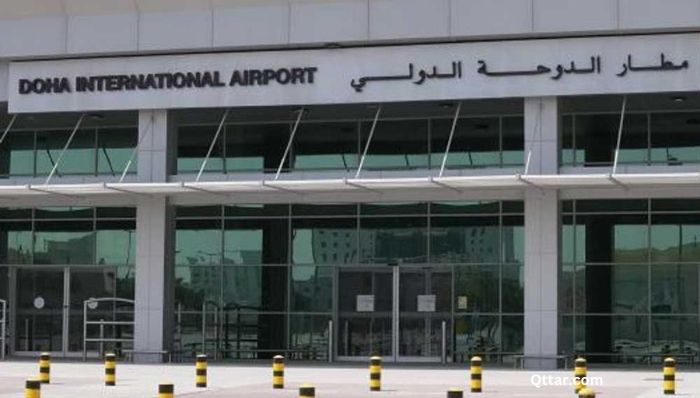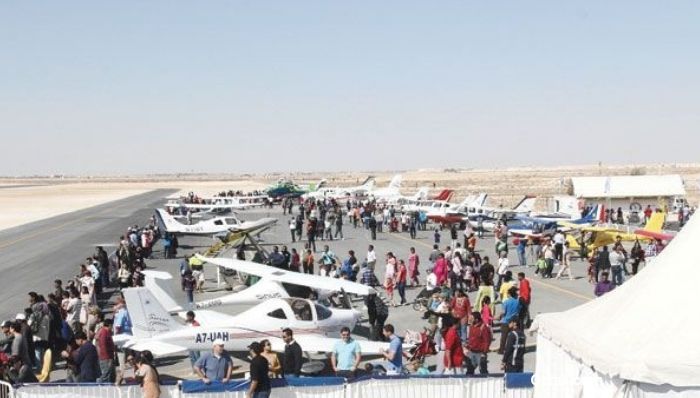How Many Airports In Qatar? Complete List
Qatar has 8 airports, with Hamad International Airport in Doha serving as the primary international gateway and hub for Qatar Airways.
Airports in Qatar
Qatar, a small peninsula nation in the Middle East, boasts a total of 8 airports spread across its territory. While this number may seem modest compared to larger countries, it’s important to understand that Qatar’s compact size and strategic location have allowed it to develop a highly efficient aviation infrastructure. The country’s airports play a crucial role in its economic development, tourism industry, and global connectivity.
1) Hamad International Airport: Qatar’s Crown Jewel
At the heart of Qatar’s aviation network lies Hamad International Airport (DOH), a state-of-the-art facility that has quickly become one of the world’s leading airports since its inauguration in 2014. Located in Doha, the capital city of Qatar, this airport serves as the primary international gateway to the country and the main hub for Qatar Airways, the national carrier.
Hamad International Airport is a testament to Qatar’s commitment to excellence in aviation. The airport’s design and facilities are nothing short of impressive, featuring cutting-edge technology, luxurious amenities, and a capacity to handle millions of passengers annually.
Some key features of Hamad International Airport include:
- Passenger Capacity: The airport can currently handle over 50 million passengers per year, with plans to expand this capacity even further.
- Infrastructure: Hamad International Airport boasts two runways, measuring 4,850 meters and 4,250 meters in length, capable of accommodating the largest commercial aircraft in operation today.
- Terminal Facilities: The passenger terminal spans an impressive 600,000 square meters, offering a wide array of services and amenities for travelers.
- Check-in Facilities: With 138 check-in counters, including 14 private booths for first-class passengers, the airport ensures a smooth and efficient check-in process for all travelers.
- Retail and Dining: The airport features an extensive selection of duty-free shops, restaurants, and cafes, catering to diverse tastes and preferences.
- Art and Culture: Hamad International Airport showcases numerous art installations and cultural exhibits, reflecting Qatar’s commitment to blending modernity with its rich heritage.
- Sustainability: The airport incorporates various eco-friendly features, including energy-efficient systems and water conservation measures, aligning with Qatar’s vision for sustainable development.

2) Doha International Airport (DIA)
Formerly the main airport of Qatar, DIA now primarily caters to general aviation and VIP flights. Its proximity to the city center makes it a convenient option for private jet operations and special flights.

3) Al Khor Airport
Located in the coastal city of Al Khor, this public airport serves the northern region of Qatar. While smaller in scale compared to Hamad International Airport, Al Khor Airport plays a vital role in connecting the northern parts of the country to the aviation network.

4) Al Udeid Air Base
This military air base is of significant strategic importance, used jointly by the Qatar Emiri Air Force and the United States Air Force. While not open to civilian traffic, Al Udeid Air Base is a crucial component of Qatar’s defense infrastructure and its partnership with international allies.

Other Minor Airports
Qatar also has a few smaller airfields and helipads that serve specific purposes, such as supporting oil and gas operations or facilitating emergency services.
The Role of Airports in Qatar’s Economy
Qatar’s airports, particularly Hamad International Airport, play a pivotal role in the country’s economic development and diversification strategy. Here’s how these aviation facilities contribute to Qatar’s growth:
- Tourism Boost: The world-class facilities at Hamad International Airport serve as a gateway for millions of tourists visiting Qatar each year, contributing significantly to the country’s tourism sector.
- Business and Investment: Efficient air connectivity attracts international businesses and investors, positioning Qatar as a favorable destination for global commerce.
- Employment Opportunities: The aviation sector, including airports and related services, provides numerous job opportunities for both Qatari nationals and expatriates.
- Cargo and Logistics: Qatar’s airports, especially Hamad International, serve as important hubs for cargo operations, facilitating international trade and supporting the country’s logistics sector.
- National Prestige: The state-of-the-art facilities at Hamad International Airport enhance Qatar’s global reputation, showcasing the country’s commitment to excellence and innovation.
Future Developments in Qatar’s Aviation Sector
Qatar’s vision for its aviation sector extends beyond the present, with ambitious plans for future growth and development. Some key initiatives include:
- Hamad International Airport Expansion: The second phase of expansion for Hamad International Airport, which began in January 2023, aims to further increase the airport’s capacity and enhance its facilities. This expansion will allow the airport to accommodate even more passengers and aircraft, solidifying its position as a global aviation hub.
- Sustainable Aviation: In line with Qatar’s commitment to environmental sustainability, there are ongoing efforts to implement green technologies and practices across the country’s airports. This includes exploring the use of sustainable aviation fuels and implementing energy-efficient systems.
- Smart Airport Technologies: Qatar is investing in cutting-edge technologies to create smarter, more efficient airports. This includes the implementation of biometric systems, artificial intelligence for passenger processing, and advanced baggage handling systems.
- Regional Connectivity: There are plans to enhance connectivity between Qatar’s airports and other regional transportation networks, including the development of integrated rail and road systems.
- Aviation Training and Education: Qatar is focusing on developing local talent in the aviation sector through specialized training programs and partnerships with international aviation institutions.
The Impact of Major Events on Qatar’s Airports
Qatar’s airports, particularly Hamad International Airport, have played crucial roles in hosting major international events. The most notable recent example is the 2022 FIFA World Cup, which saw a significant influx of visitors to the country. During such events, Qatar’s aviation infrastructure demonstrates its capacity to handle increased passenger volumes while maintaining high standards of service and efficiency.
The successful handling of major events not only showcases Qatar’s capabilities in aviation management but also contributes to the country’s reputation as a global destination for sports, culture, and business events.
Frequently Asked Questions about Airports in Qatar
To address common inquiries about Qatar’s airports, here are some frequently asked questions:
How many airports are there in Qatar?
Qatar has a total of 8 airports, including both civilian and military facilities. However, the main international airport serving the country is Hamad International Airport in Doha.
Which is the main airport in Qatar?
Hamad International Airport (DOH) is the primary airport in Qatar. Located in Doha, it serves as the main international gateway to the country and is the hub for Qatar Airways.
Is Doha airport the same as Hamad International Airport?
Yes, Doha airport and Hamad International Airport refer to the same facility. Hamad International Airport replaced the old Doha International Airport in 2014 and is now commonly referred to as Doha airport.
How far is Hamad International Airport from Doha city center?
Hamad International Airport is located approximately 15 kilometers (9.3 miles) south of Doha’s city center. The travel time between the airport and the city center is typically around 20-30 minutes by car, depending on traffic conditions.
Does Qatar have more than one international airport?
While Qatar has multiple airports, Hamad International Airport in Doha is currently the only major international airport serving scheduled commercial flights. The other airports in Qatar are primarily used for general aviation, military purposes, or domestic flights.
Can I transit through Doha airport without a visa?
Yes, many nationalities can transit through Hamad International Airport without a visa for up to 96 hours. However, visa requirements can change, so it’s always best to check the latest regulations with Qatar Airways or the Qatar Ministry of Interior before traveling.
What amenities are available at Hamad International Airport?
Hamad International Airport offers a wide range of amenities, including:
- Numerous duty-free shops and retail outlets
- Various dining options, from fast food to fine dining
- Lounges for premium passengers and airline club members
- A hotel within the transit area
- Art installations and cultural exhibits
- Prayer rooms and quiet areas
- Children’s play areas
- Free Wi-Fi throughout the terminal
Is Hamad International Airport open 24/7?
Yes, Hamad International Airport operates 24 hours a day, 7 days a week. The airport never closes, accommodating flights and passengers at all hours.These FAQs provide additional information about Qatar’s airports, particularly focusing on Hamad International Airport, which is the country’s primary aviation facility. They address common queries that travelers and aviation enthusiasts might have when considering travel to or through Qatar.
Georgia visa for Qatar residents

Ammara Abdullah is an experienced writer and editor specializing in technology and digital trends. With over 5 years of experience, she produces insightful articles on emerging tech, consumer electronics, and digital culture. Ammara holds a degree in journalism and is passionate about making complex topics accessible to readers.






